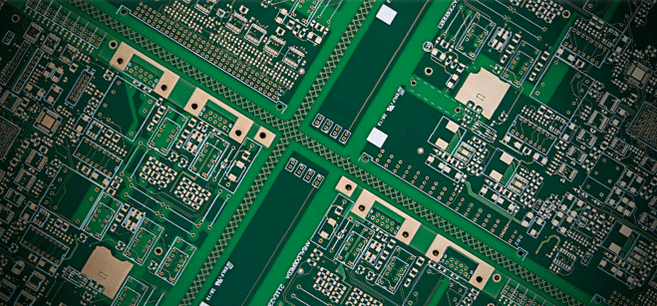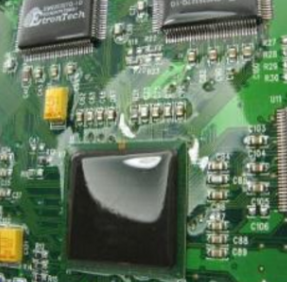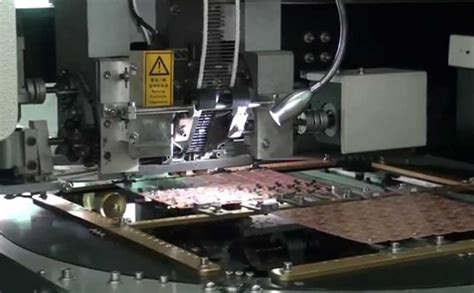Optimizing Contract Manufacturing for Scalable Electronic Assembly

Key Takeaways
Optimizing PCB assembly and PCBA processes requires a strategic focus on supply chain agility and quality assurance frameworks. By integrating advanced production monitoring systems, manufacturers can reduce defects in PCB assembly by up to 30%, while accelerating cycle times. For instance, adopting automated optical inspection (AOI) paired with real-time data analytics ensures consistent quality across high-volume PCBA runs.
| Strategy | Impact on Scalability | Cost Reduction |
|---|---|---|
| Automated Testing | 25% faster defect detection | 15% lower rework costs |
| Supplier Collaboration | 20% shorter lead times | 10% material savings |
| IoT-Driven Process Controls | 35% improved yield rates | 12% energy efficiency |
Leveraging modular design principles further enhances flexibility in PCB assembly, enabling rapid adaptation to evolving product specifications. Additionally, partnerships with certified PCBA providers streamline compliance with industry standards like IPC-A-610, ensuring reliability without compromising scalability. Finally, embedding predictive maintenance into assembly workflows minimizes downtime, creating a foundation for sustainable growth in electronic manufacturing.

Streamlining Electronic Assembly Supply Chains
Effective supply chain management in PCB assembly and PCBA requires strategic alignment between design specifications, component sourcing, and production workflows. By consolidating suppliers for critical materials like high-density interconnect (HDI) boards or surface-mount devices (SMDs), manufacturers can reduce lead times and mitigate risks of component shortages. Real-time inventory tracking systems paired with predictive analytics enable proactive adjustments to demand fluctuations, ensuring seamless material flow from procurement to final assembly.
Tip: Implement vendor-managed inventory (VMI) programs with key partners to automate replenishment cycles and minimize stockouts during high-volume production runs.
Integrating PCB assembly processes with automated logistics platforms further enhances visibility across multi-tiered supply chains. For instance, IoT-enabled sensors on reflow ovens or pick-and-place machines can transmit performance data to centralized dashboards, allowing cross-functional teams to identify bottlenecks before they escalate. Collaborative planning tools also facilitate synchronized timelines between PCBA stages and downstream testing phases, reducing idle time between workflows.
"A streamlined supply chain isn’t just about speed—it’s about creating resilient networks that adapt to both market shifts and technological advancements," notes a senior operations manager at a leading electronics contract manufacturer.
Leveraging cloud-based ERP systems ensures compliance with evolving regulatory standards while maintaining traceability for components like RoHS-compliant solder pastes or conflict-free minerals. This approach not only accelerates time-to-market but also aligns with sustainability goals by minimizing waste in material handling and transportation.
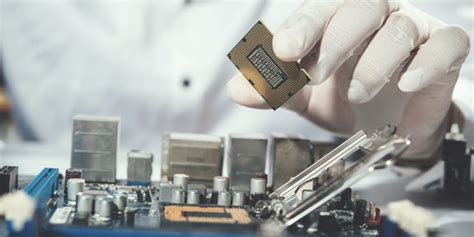
Quality Control in Contract Manufacturing Solutions
Effective quality control (QC) is the cornerstone of successful PCB assembly and PCBA processes in contract manufacturing. As production scales, even minor defects in components or soldering can lead to costly delays or product recalls. To mitigate risks, manufacturers employ automated optical inspection (AOI) systems to scan PCB assembly layers for anomalies, while X-ray inspection ensures hidden solder joints in PCBA meet industry standards. These technologies, combined with rigorous testing protocols like in-circuit testing (ICT) and functional testing, create a multi-layered QC framework.
Supply chain integration further strengthens quality outcomes. By partnering with certified suppliers for critical materials—such as high-reliability PCB substrates—manufacturers reduce variability in raw materials. Real-time data sharing across design, procurement, and production teams also enables proactive adjustments, ensuring PCB assembly aligns with exact specifications. For PCBA, traceability systems track components from sourcing to final integration, simplifying root-cause analysis if defects arise.
To maintain consistency in high-volume runs, statistical process control (SPC) tools monitor key metrics like solder paste deposition accuracy. This data-driven approach, paired with ISO 9001 or IATF 16949 compliance, ensures QC processes remain scalable and repeatable. By balancing advanced inspection technologies with robust supply chain practices, contract manufacturers deliver PCB assembly and PCBA solutions that meet both quality benchmarks and tight production timelines.
Leveraging Tech for Faster Production Timelines
Integrating advanced technologies into PCB assembly processes has become a cornerstone for accelerating production timelines in contract manufacturing. Automation tools, such as AI-driven pick-and-place systems and machine learning algorithms, optimize component placement accuracy while reducing manual intervention. Real-time monitoring through IoT-enabled devices allows manufacturers to track PCBA progress across multiple stages, identifying bottlenecks before they escalate. For instance, predictive analytics can forecast equipment maintenance needs, minimizing unplanned downtime by up to 30%.
Cloud-based platforms further streamline collaboration between design and production teams, enabling rapid iterations during prototyping. By adopting digital twin simulations, manufacturers can test PCB assembly configurations virtually, slashing physical prototyping cycles by weeks. Additionally, automated optical inspection (AOI) systems enhance quality assurance speeds, ensuring defects are flagged in milliseconds rather than hours. These technologies not only compress timelines but also create a feedback loop, where data from one production run refines the next.
Strategic investments in such tools position contract manufacturers to meet escalating demand without compromising precision—a critical advantage in industries like automotive and consumer electronics, where faster time-to-market directly correlates with competitive edge.
Emerging Technologies Cutting Assembly Costs
The adoption of advanced technologies is revolutionizing PCB assembly processes, enabling manufacturers to achieve unprecedented cost efficiencies. Automated optical inspection (AOI) systems, powered by machine learning algorithms, now detect micro-scale defects in PCBA with 99.8% accuracy, reducing rework expenses by up to 40%. Similarly, robotic soldering systems optimize material usage while maintaining precision across high-volume production runs. Transitioning to automated assembly not only accelerates throughput but also minimizes human error—a critical factor in complex multilayer board fabrication.
Another breakthrough lies in predictive maintenance tools that analyze equipment performance data to preempt downtime, ensuring continuous PCB assembly line operations. IoT-enabled supply chain platforms further synchronize component deliveries with real-time production demands, eliminating inventory bottlenecks. For PCBA projects requiring rapid prototyping, 3D printing of circuit substrates cuts lead times by 65% compared to traditional methods. By integrating these innovations, manufacturers achieve a 20-30% reduction in per-unit costs while scaling output—a balance previously unattainable with conventional workflows.

Cost-Effective Electronic Manufacturing Strategies
Achieving cost efficiency in PCB assembly requires a balanced approach that prioritizes both quality and scalability. One proven strategy involves optimizing PCBA (Printed Circuit Board Assembly) workflows through value engineering—a method that evaluates design choices, material selection, and production processes to eliminate redundancies without compromising performance. For instance, consolidating component suppliers or negotiating bulk purchasing agreements can reduce procurement costs while maintaining access to high-grade materials.
Integrating automated testing systems into PCB assembly lines minimizes human error and accelerates defect detection, directly lowering rework expenses. Additionally, adopting modular design principles allows manufacturers to standardize PCBA layouts across product variants, streamlining inventory management and reducing tooling costs. Advanced analytics tools further enhance cost predictability by identifying bottlenecks in real time, enabling proactive adjustments to production schedules.
Collaboration with certified contract manufacturers specializing in PCB assembly ensures access to economies of scale, particularly for high-volume orders. These partnerships often provide opportunities to leverage shared resources, such as state-of-the-art soldering equipment or compliance testing facilities, which might otherwise require significant capital investment. By aligning design flexibility with scalable manufacturing frameworks, businesses can achieve faster time-to-market while maintaining tight control over per-unit costs.
Transitioning to leaner processes also involves rigorous lifecycle assessments, ensuring that material waste and energy consumption are minimized at every PCBA stage. This holistic approach not only supports cost reduction but also aligns with evolving regulatory standards, positioning companies competitively in markets increasingly driven by sustainability demands.
Accelerating Output Through Strategic Partnerships
Strategic partnerships with specialized PCB assembly providers can significantly enhance production scalability while maintaining cost efficiency. By aligning with trusted PCBA (Printed Circuit Board Assembly) partners, manufacturers gain access to advanced fabrication technologies and streamlined workflows that reduce bottlenecks. For instance, integrating design-for-manufacturability (DFM) principles early in product development ensures compatibility with a partner’s equipment, minimizing rework and delays. Collaborative planning tools, such as shared supply chain dashboards, enable real-time adjustments to material procurement, ensuring seamless transitions from prototyping to mass production.
A key advantage lies in leveraging a partner’s expertise in high-mix, low-volume PCBA production, which allows brands to scale output without overcommitting resources. Providers like Microart Services exemplify this approach, offering agile PCB assembly solutions that adapt to fluctuating demand. Additionally, joint investments in automation—such as AI-driven inspection systems or robotic soldering—accelerate throughput while maintaining stringent quality benchmarks. By fostering transparent communication and aligning KPIs, these partnerships create a symbiotic ecosystem where innovation and efficiency thrive, ultimately driving faster time-to-market for complex electronic products.
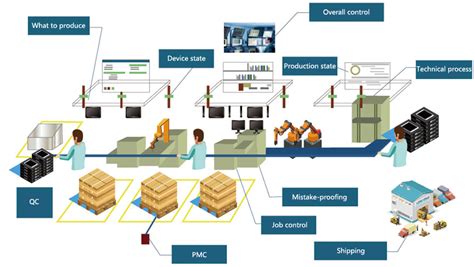
Scalable Electronic Assembly Best Practices
Achieving scalability in PCB assembly requires balancing standardization with adaptability. By implementing modular design principles, manufacturers can streamline PCBA workflows while retaining flexibility for product iterations. A critical step involves adopting automated optical inspection (AOI) systems to maintain consistency across high-volume batches, reducing human error by up to 85% compared to manual checks.
Integrating design-for-manufacturability (DFM) guidelines early in the process ensures components align with assembly capabilities, minimizing rework. For instance, optimizing pad sizes and solder mask clearances accelerates PCB assembly throughput by 20–30%. Equally important is leveraging data analytics to monitor production line efficiency, identifying bottlenecks in real time—a strategy proven to reduce idle machine time by 40% in multi-stage PCBA processes.
Material selection also plays a pivotal role. Partnering with suppliers offering RoHS 3-compliant components, as outlined in this analysis, future-proofs assemblies against regulatory shifts while supporting eco-conscious scaling. Finally, establishing cross-functional feedback loops between design, procurement, and assembly teams creates a responsive framework for adjusting to fluctuating demand without compromising quality—a cornerstone of scalable electronic manufacturing systems.
Integrating Supply Chains for Manufacturing Efficiency
Effective supply chain integration forms the backbone of scalable PCB assembly and PCBA production. By aligning material procurement, component sourcing, and logistics with manufacturing workflows, contract manufacturers minimize delays and reduce overhead costs. Real-time collaboration with suppliers ensures timely delivery of critical parts, while just-in-time inventory systems prevent overstocking and material waste. Advanced tools like cloud-based procurement platforms enable seamless communication across stakeholders, creating a unified ecosystem for electronic assembly processes.
Incorporating IoT-enabled tracking into supply chains enhances visibility, allowing manufacturers to monitor component quality and delivery timelines at every stage. This transparency is particularly vital for PCB assembly, where precision in sourcing surface-mount devices (SMDs) or multilayer substrates directly impacts final product reliability. Additionally, integrating automated demand forecasting tools with production schedules ensures alignment between PCBA output and market needs, reducing bottlenecks during scaling.
Strategic partnerships with certified suppliers further strengthen supply chain resilience. For instance, dual-sourcing high-risk components mitigates disruptions in electronic assembly lines, while vendor-managed inventory (VMI) models optimize cash flow. By embedding these practices, manufacturers achieve end-to-end traceability and faster response times—key drivers for maintaining efficiency in competitive contract manufacturing landscapes.
Conclusion
In the evolving landscape of PCB assembly and PCBA, optimizing contract manufacturing requires a balanced focus on agility and precision. By integrating advanced technologies such as automated optical inspection (AOI) and IoT-driven analytics, manufacturers can enhance quality control while minimizing production bottlenecks. Strategic partnerships with suppliers ensure seamless supply chain integration, reducing lead times and material costs. Additionally, adopting scalable frameworks for electronic assembly enables businesses to adapt to fluctuating demand without compromising on cost-efficiency.
Emerging tools like AI-powered defect detection and modular PCBA workflows further accelerate timelines, ensuring that high-volume projects meet both technical specifications and market deadlines. Crucially, the alignment of manufacturing efficiency with sustainable practices—such as energy-efficient processes—strengthens long-term competitiveness. As industries prioritize faster, smarter production, the convergence of innovation and collaboration remains central to achieving scalable success in contract manufacturing electronic assembly.
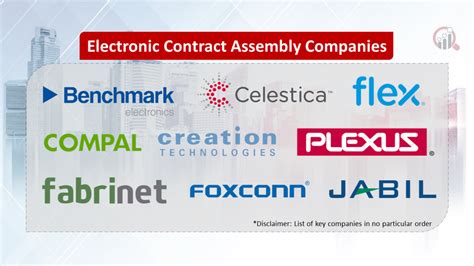
Frequently Asked Questions
How does optimized PCB assembly improve cost efficiency in contract manufacturing?
By streamlining material procurement and automating processes like solder paste application, optimized PCB assembly reduces waste and labor costs. Advanced design-for-manufacturing (DFM) principles further minimize rework, ensuring faster turnaround for PCBA projects.
What quality control measures are critical for scalable PCBA production?
Implementing automated optical inspection (AOI) and X-ray testing ensures consistent defect detection across high-volume batches. Partnering with manufacturers certified in ISO 9001 and IPC-A-610 standards guarantees adherence to rigorous PCB assembly quality benchmarks.
How do emerging technologies accelerate PCBA timelines?
AI-driven predictive maintenance and IoT-enabled supply chain tracking reduce downtime and material delays. Additionally, 3D printing for rapid prototyping shortens design validation cycles, enabling faster scaling of PCB assembly workflows.
Can contract manufacturers support both low-volume and high-volume PCBA needs?
Yes, flexible manufacturers utilize modular production lines and just-in-time inventory systems to seamlessly transition between pilot runs and mass production, ensuring scalability without compromising PCB assembly quality.
Ready to Optimize Your PCB Assembly Process?
For tailored solutions that align with your production goals, please click here to explore advanced PCBA strategies and request a consultation.




